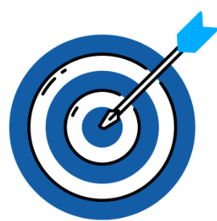Online research has become a staple before purchase for most consumers — in fact, 81% start their buyer journey by conducting online research on a given product or service. This is to ensure they're making the best possible choice.
As a result, intent data has become a crucial component of marketing because 67% of the buyer journey is completed before a salesperson closes the deal with the final 33%. The same report increased marketing engagement by 30-120%, reduced CPL by 20-40%, generated a 100-300% marketing budget ROI, and even drove 2-4 times better pipeline expansion.
This research suggests most consumers go through the buyers' journey without speaking to a salesperson — making the need to purchase intent data for lead generation and nurturing crucial to reaching those in the first half of their (if not the entire) journey.
Here's what you need to know: how to leverage intent data in your marketing and B2C/B2B lead nurturing and the power of intent data for lead generation.
What is Intent Data?
 Intent data is behavioral data that gives marketers insight into whether a lead or prospect is interested in their products/services via a user's web content consumption and intent to take action. As a notable element of data-driven marketing, intent data gives you the unique opportunity to intercept online searchers looking for solutions your brand offers.
Intent data is behavioral data that gives marketers insight into whether a lead or prospect is interested in their products/services via a user's web content consumption and intent to take action. As a notable element of data-driven marketing, intent data gives you the unique opportunity to intercept online searchers looking for solutions your brand offers.
How to Collect Intent Data

You can collect intent data in one of two ways:
- First-party intent data
- Third-party intent data
First-party intent data refers to the behavioral data you're collecting in-house. It includes information on website visitors, webinar attendance, page views, gated content, and IP addresses. Although it is undoubtedly the most reliable form of data collection, it is limiting as you only get a glimpse of one part of the buyers’ journey from your current customer base.
Third-party intent data allows you to expand your insight into the consumer knowledge a third-party company has on your target audience. It is collected on another website and can often be purchased, giving you a more holistic view of your customers, where they are in their journey, the behaviors influencing them to proceed forward and take action, and more.
Most (87%) buyers now want to 'self-serve' all or most of their buyer journey. A combination of first and third-party intent data will ensure your content and strategies are uniquely targeted to the stage and interests of each user.
How to Use Intent Data
"Numbers have an important story to tell. They rely on you to give them a clear and convincing voice." — Stephen Few, Business Intelligence Educator, Consultant, and Innovator.
Intent data has all the information you need to personalize your communication with current and potential customers. It is up to you to put it to use and make the most of the data you've gathered. Here are our top tips for how to use intent data.
Identify Buyer Interests
 How well do you know your ideal customer's interests? Are you prepared to speak to those interests to help them along their journey and on the right path to purchasing your product or service? With intent data, you're several steps closer.
How well do you know your ideal customer's interests? Are you prepared to speak to those interests to help them along their journey and on the right path to purchasing your product or service? With intent data, you're several steps closer.
As a type of behavioral data, you gain insight into what makes each prospect click:
- Which offers are relevant (are there upselling/cross-selling opportunities?)
- The types of approaches that work best
- The most effective influences to encourage a sale or action, etc.
Although you'll have a generally similar target audience, consumers will vary from case to case in terms of what influences them to move through the funnel faster.
Build Target Lists
 Who do you want to include in your marketing campaign? Building a target list backed by the intent data you gathered will ensure you're reaching specific segments of your audience with relevant content/messages that will resonate. The specifics of your target list will vary by your business and goals but can include the following:
Who do you want to include in your marketing campaign? Building a target list backed by the intent data you gathered will ensure you're reaching specific segments of your audience with relevant content/messages that will resonate. The specifics of your target list will vary by your business and goals but can include the following:
- Customer type
- Age group
- Industry, etc.
This allows you to easily include or exclude contacts/leads depending on the role they'll play in your marketing campaign.
Segment Personas and Personalize
Personas and personalization go hand-in-hand if you want to succeed in your customized marketing approach. This means that you're not only separating your ideal customers from those who would have no need or interest in your offer but also segmenting your target audience into groups. This will be key as the need for personalization is not just to reach the right person. It's so you can also resonate with their specific needs and interests to build a connection that elicits that first purchase and many more after.
How many personas you create and maintain can vary, with many experts recommending anywhere from three to eight.
Tailor Messaging to Battle Interest in Competitors
 No matter what industry you're in, there's nearly always a host of competitors ready to sneak up on you and take the lead. There's no room for error in an environment that prioritizes personalized and relevant communication with brands. You must be able to tailor your messages to the right consumers to ensure your brand is always adding value to their research and making their lives easier in the process.
No matter what industry you're in, there's nearly always a host of competitors ready to sneak up on you and take the lead. There's no room for error in an environment that prioritizes personalized and relevant communication with brands. You must be able to tailor your messages to the right consumers to ensure your brand is always adding value to their research and making their lives easier in the process.
Intent data is a great way to leverage your knowledge of leads to attract and nurture them throughout the buyer journey.
Nurture Your Pipeline with the Right Messaging
 So, you've attracted significantly more leads to your brand and offers, but what happens next? You must use that intent data to attract and nurture those leads the rest of the way!
So, you've attracted significantly more leads to your brand and offers, but what happens next? You must use that intent data to attract and nurture those leads the rest of the way!
With the right messaging, prospects working their way through the pipeline will find that your brand is always there when they need it — delivering the information they need at the exact moment they need it to move forward. That type of understanding and authority will be a key differentiator when it comes down to you and the competition in the final moments of their purchasing decision.
Personalization is no longer an option in marketing. To compete with the big guys — or at all, in most cases — your brand must cater to the 71% of consumers that have come to expect it at every touchpoint. To do so, you need intent data, and the expert team at McClatchy can help.







